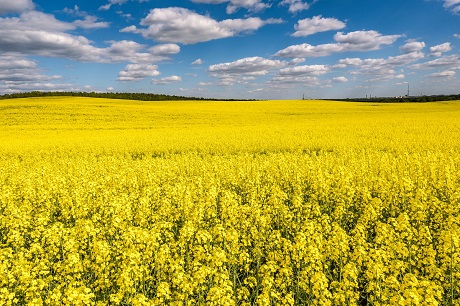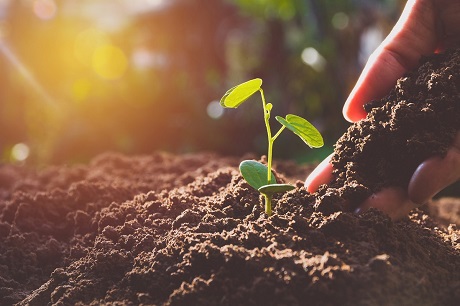Regenerative Agriculture the Only Possible Way Forward, European Researchers Agree
The forms of agriculture used today have negative impacts on the environment on a global scale.
The forms of agriculture used today have negative impacts on the environment on a global scale. Our methods of food production need to change, and the alternative may be so-called regenerative agriculture. A report on its potential was published by EASAC, an association of the National Academies of Science of the EU Member States, Norway, Switzerland, and the UK. Czech involvement was by way of researchers from the Institute of Botany of the CAS contributing to the report.
Agriculture today is largely undermining climate stability and biodiversity. Apart from disrupting certain important elements of the dry biomass, it’s also a threat to basic ecosystem functions: it makes pollination more difficult, deforestation is occurring, and soil fertility is declining while soil erosion is on the rise. Another major problem is the deteriorating capacity of the soil and landscape as a whole to retain water, which increases the risk of floods and droughts.
Biodiversity is also at risk – not only that of cultivated fields, but of riverbeds, coastlines, and deep oceans. Moreover, agriculture is responsible for more than a third of all greenhouse gases produced globally, while certain global humanitarian problems, such as food shortages, are no closer to being resolved.

Agricultural monocultures, where vast fields are covered by a single type of crop, result in reduced biodiversity and disruption of the landscape’s ecological functions.
For these reasons, EASAC commissioned a study on alternatives to the current system of agricultural production. The focus of the report is on the possibilities of so-called regenerative agriculture and the potential of green fields for sequestering greenhouse gases. Eva Baldassarre Švecová and Karel Prach from the Institute of Botany of the CAS also contributed to the report.
An alternative for a healthier future
The idea behind regenerative agriculture is to mimic as closely as possible the inherent processes that occur in nature. It is a method that requires the close monitoring of ecological and biological processes. At the same time, it requires as little human intervention as possible. For instance, mechanical and chemical disturbance of the soil is minimised. It is no longer an agriculture based on maximising yields. The measure of success is the nutritional quality of the food sources grown, not their quantity.
However, this idea has been met with scepticism. Critics argue that such changes would slow down current industrial agriculture and make it impossible to feed and sustain the growing global population. But according to the EASAC study, such a transformation would not necessarily disrupt production, and modern farming methods are compatible with it. Regenerative agriculture, for instance, does not exclude the targeted use of pesticides; it merely requires chemical pesticides to be replaced with biopesticide or other sustainable alternatives.
Loss of nutrients in soil is a concern for all of Europe
At the heart of the study is an analysis of the ability of soil to sequester and store carbon. This element is a major source of nutrients for plants. If plants do not get enough carbon, growth is slower and their nutritional value decreases.
Regenerative agriculture has the potential to extract large amounts of carbon dioxide (CO2) out of the atmosphere and return it back into the soil. This would solve two ecological problems at once: reducing the level of greenhouse gases in the atmosphere while also utilising them for plant nutrition. Tests have shown that the capacity of soil to store carbon dioxide is higher than expected. This is particularly true in the case of grasslands.

Through the process of photosynthesis, the green parts of plants above ground bind carbon dioxide. The soil then absorbs the dead organic matter and provides nutrients for other plants.
The release of greenhouse gases from the soil is a problem nowadays, and scientists are trying to find a solution. “The first step is to reduce the intensity of the emissions. The second step, which could ideally be done simultaneously, is to increase the organic matter content of the soil, thereby binding carbon dioxide,” notes Karel Prach from the Institute of Botany of the CAS, adding that soil itself does not sequester CO2. It is the green plants that extract the gases from the air during photosynthesis.
Seeking the courage to make a change
The recommendation of the scientific community is for changes towards regenerative agriculture to become a priority for EU countries.
According to scientists, agriculture needs to use a more diverse range of crops and concentrate on perennial crops. It is necessary to invest in maintaining ecosystems at the boundaries between forests and fields. It would also be advisable to ensure that fields are covered with grass or plants throughout the year, not just during crop season. This also necessitates reducing mechanical cultivation.
Whether the will to make such a change will be found is, however, uncertain. “In the future, regenerative agriculture is the only sensible way forward,” Prach notes. “However, when you look around and all you can see are fields of rapeseed and other intensively cultivated crops covering vast fields, it will probably be a very slow journey,” he concludes.
Prepared by: Jan Hanáček, Division of External Relations, CAO of the CAS
Translated by: Tereza Novická, Division of External Relations, CAO of the CAS
Photo: Shutterstock
Original Story Source: Czech Academy of Sciences

 Alerts Sign-up
Alerts Sign-up